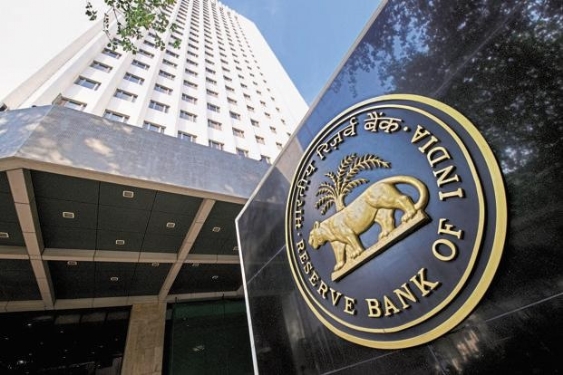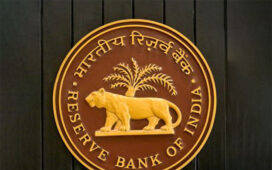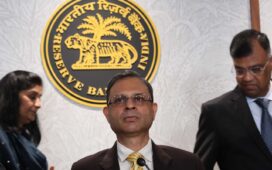On September 16, 2025, Reserve Bank of India (RBI) Deputy Governor M. Rajeshwar Rao addressed the CNBC-TV18 Banking Transformation Summit in Mumbfai, focusing on the opportunities and risks of deploying artificial intelligence (AI) in the financial sector. He noted that AI is already reshaping banking through credit scoring, fraud detection, multilingual chatbots, document verification, and tailored credit solutions. By harnessing digital footprints and alternative data, banks could extend credit to “credit invisibles”—millions of people with no formal credit history, and MSMEs, improving inclusion and efficiency.
Moreover, AI-driven early warning systems could help lenders detect defaults sooner and design personalised repayment strategies, thereby strengthening financial stability.
However, Rao also emphasised that these benefits come with serious risks. He highlighted the dangers of algorithmic bias, over-reliance on opaque “black box” models, third-party dependencies, and market-wide vulnerabilities if many institutions use similar AI systems. He also warned of cyber threats and the potential misuse of generative AI for fraud and disinformation. Rao urged banks to implement “human-in-the-loop” oversight, ensure data quality and privacy, and adopt explainable AI frameworks so that credit decisions remain transparent and fair.
Ultimately, he said the sector must balance innovation with prudence. AI can transform credit delivery and financial inclusion, but without responsible adoption and robust governance, it could undermine trust, which he called the “currency of banking.”
Structural And Market Vulnerabilities
Deputy Governor M. Rajeshwar Rao cautioned that the adoption of AI in India’s banking sector brings with it a host of systemic vulnerabilities. He emphasised that banks are increasingly reliant on “complex networks of external providers, cloud platforms, AI vendors, and data aggregators,” which create hidden fragilities. “These interdependencies create vulnerabilities where a disruption or breach in one link can cascade across multiple institutions, disrupting critical services,” Rao warned. Because these layers are often opaque, the risks may “accumulate unnoticed and spread rapidly during shocks.”
He highlighted the risk of synchronised behaviour across the financial system. “When institutions use similar models trained on overlapping data, their decisions on asset pricing, credit assessment, trading, and others may align,” he explained. Rao argued that such alignment can amplify stress during market downturns. “This can amplify market stress, spread shocks rapidly, worsen liquidity shortages, increase asset price volatility, and trigger sharp, self-reinforcing market swings,” he said. This form of correlation, largely invisible until a crisis strikes, could undermine the resilience of the financial system.
Cybersecurity risks were another pressing concern. As banks integrate AI into core functions, they expand their attack surface, particularly through open interfaces and vast datasets. “AI’s strengths, such as reliance on large datasets, open interfaces, and automated decisions, also create vulnerabilities,” Rao noted. Malicious actors, he warned, can exploit these weaknesses through adversarial attacks or compromised training data. “Even a single breach can disrupt critical operations across multiple Regulated Entities (REs) and undermine trust in AI across the sector,” he cautioned.
Model, Data, And Concentration Risks
Rao also underlined the risks stemming from AI’s opaque nature. “Unlike traditional models built on clear rules and well-laid-out assumptions, AI models operate through dense, opaque algorithms, which we also refer to as ‘black boxes,’” he said. Because these systems evolve with data, they are difficult to audit and explain. “This introduces the risk of prejudice within models, where biased data, opaque design, or untested assumptions may lead to biased outcomes,” Rao warned. The consequences could be severe: deserving borrowers may be excluded, while riskier loans may be approved.
Data quality, he stressed, represents another weak point. “AI is only as strong as the data that shapes it,” Rao observed. Yet much of India’s financial data is “fragmented across systems, often in inconsistent formats, sometimes incomplete or outdated, or skewed by historical biases.” Feeding such data into AI systems could produce outputs that “may appear authentic but are suboptimal and, in some cases, may produce wrong outputs.” Over time, this could turn data flaws into systemic misjudgements, distorting credit allocation and decision-making.
Legal and structural risks also drew attention. Rao pointed out that AI models, which often draw on publicly available material, may expose banks to “intellectual property and copyright infringements.” Beyond this, he noted the danger of over-reliance on a handful of technology providers. The Reserve Bank’s own Financial Stability Report had already highlighted “the high market concentration in critical third-party providers of cloud/AI services.” Rao warned that such dependence could create “single points of failure,” particularly as some providers control not just models but also infrastructure and datasets.
Finally, he sounded a sharp warning about the misuse of generative AI in fraud and disinformation. He pointed out the “unsettling accuracy” of deepfakes and noted that AI-created phishing lures and forged credentials can slip past checks.
Crucial Aspects For AI Adoption
Deputy Governor Rao stressed that banks must adopt AI “in a responsible and measured manner,” ensuring that innovation goes hand in hand with prudence. He highlighted several crucial aspects that needed to be kept in mind for this adoption:
- Governance: Rao argued that robust governance is “indispensable for ensuring the integrity of data, the reliability of models, and mitigating the risks associated with adoption of AI.” He urged financial institutions to craft comprehensive AI strategies with clear policies, defined risk appetites, ethical standards, and monitoring frameworks. He stressed the need for explainable AI, noting that in banking, it is “essential to understand how a model arrives at its decisions.”
- Human-in-the-loop: He insisted that while AI can automate and recommend, final accountability must remain with humans. “The humans should be responsible for the decisions,” Rao said, emphasising that AI should support and enhance judgment rather than replace it.
- Data quality and security: He described high-quality data as “the backbone of safe and effective AI in finance.” Financial institutions, he said, must adopt strong data strategies and ensure privacy-first handling of customer information, in line with the Digital Personal Data Protection Act, 2023.
- Research and development: Rao called for sustained investment in research to improve data quality, create algorithms that reduce bias, and strengthen in-house capabilities. He argued that banks should not only focus on innovation but also build resilience against the risks of over-reliance on external providers.
- Industry collaboration: Finally, he urged collaboration among banks, fintech firms, and academic institutions. Such partnerships, he suggested, could develop best practices, harmonise taxonomies, and establish common benchmarks, thereby fostering transparency, fairness, and accountability in AI-driven credit processes.
How AI Can Change India’s Banking
Rao argued that artificial intelligence can revolutionise the entire credit lifecycle, from assessment to recovery. He began by highlighting its role in expanding credit inclusion. By analysing digital footprints and alternative datasets, AI can “address the credit requirement of the millions of ‘credit invisibles,’” shifting banks from asset-based to cash-flow- and behaviour-based lending. This, he said, would mark a paradigm shift towards inclusive digital finance.
He explained that AI can also accelerate turnaround times. By processing vast amounts of customer data, from Goods and Services Tax (GST) filings to Trade Receivables Discounting System (TReDS) receivables, AI enables quicker decisions, which is particularly valuable for Micro, Small and Medium Enterprises (MSMEs) dependent on timely working capital. Furthermore, in credit appraisals, AI-driven behavioural analytics can detect patterns in transactions, leading to more accurate assessments and stronger decision-making.
Advertisements
In addition, Rao noted that AI could provide customised credit solutions. By dynamically evaluating customer preferences and capacity, banks can offer products tailored to individual needs, improving accessibility and fairness. Beyond lending, AI-powered early warning systems can strengthen risk management by flagging stress signals and monitoring portfolios in real time. “The goal, ultimately, is not just to lend more but to lend better,” he remarked.
He also pointed to efficiency gains in document management through optical character recognition, improved grievance redress via multilingual chatbots, and enhanced customer engagement with AI assistants. Moreover, he stressed that AI can strengthen compliance and loan servicing while simultaneously bolstering fraud detection and cybersecurity. Finally, Rao emphasised that collaboration with fintechs will be central to this “credit revolution.”
Regulatory Guardrails And RBI FREE-AI Report
The RBI has begun laying down clear guardrails to ensure that AI in finance develops responsibly. In August 2025, its Committee on Framework for Responsible, Efficient, and Ethical AI (FREE-AI) released a report that sets out a blueprint for both innovation and risk management. Rao noted that the Bank is expanding its model risk guidelines into a broader framework that will apply across all AI models, stressing that proportionality will remain key as entities of different scales adopt the technology.
The FREE-AI Report outlined 6 strategic pillars, divided equally between enabling innovation and mitigating risk. It called on banks to adopt board-approved AI strategies, disclose when they use AI in customer interactions, and strengthen both audit and incident-reporting systems. It also urged tighter contractual clauses with vendors, ensuring that accountability for AI models does not fall through the cracks. In addition, it pressed for more robust cybersecurity practices to address the rising threat of adversarial attacks and data breaches.
Crucially, the Committee recommended developing indigenous, sector-specific AI models that reflect India’s linguistic diversity and financial realities, rather than relying solely on imported or general-purpose systems. It also proposed an AI Innovation Sandbox to allow controlled experimentation, alongside shared infrastructure such as public data lakes and computing resources to help smaller banks and fintechs. Together, these measures aim to ensure that AI adoption remains transparent, explainable, and accountable, while still supporting innovation across the sector.
Why This Matters
The RBI is actively navigating the complexities of integrating AI into the country’s financial sector. RBI Deputy Governor M. Rajeshwar Rao highlighted the transformative potential of AI to enhance credit delivery and promote financial inclusion by serving millions of “credit invisibles” who lack a formal credit history.
However, the RBI is also keenly aware of the significant risks. As a result, the Committee on Framework for Responsible, Efficient and Ethical AI (FREE-AI) released a report that sets out a blueprint for both innovation and risk management. For instance, Rao warned of the dangers of algorithmic bias, opaque “black box” models, over-reliance on third-party vendors, and systemic vulnerabilities from widespread use of similar AI systems. He also noted the increasing threat of cyberattacks and the misuse of generative AI to create deepfakes and disinformation.
To address these concerns, the FREE-AI report has already outlined key guardrails. It advocates for board-approved AI strategies, greater transparency with customers, and stronger cybersecurity practices. It also recommends developing indigenous AI models suited for India’s unique financial landscape and establishing an AI Innovation Sandbox for controlled experimentation.
Consequently, India’s Central Bank recognises the transformative potential of AI in the sector, but its messaging calls for responsible and phased adoption, keeping in mind the pitfalls of AI. Ultimately, the RBI aims to balance technological innovation with robust governance to maintain trust in the banking system.
Also Read
Support our journalism:
For You
Source link



